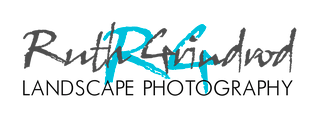Why print ?
Printing your photos is one of the most satisfying and rewarding parts of photography. However I hear time and time again that people can’t be bothered to learn this craft or that it’s not worth it. Before we were awash, no drowning, in phone and web images of varying quality and before the digital age all serious photographers printed their work particularly in black and white. Film was shot and then processed producing a negative that may yield a good print on the enlarger if you knew what you were doing. A range of chemicals were used and I can just about remember how to do this for black and white images. I had a council flat in Greenwich over 4 decades ago and the seperate loo became the darkroom all blacked out …..I am sure the neighbours thought something very ‘off’ was going on! Learning these techniques were hard and troublesome and you had to do everything pretty much in the dark too. But it did teach you what to look for in terms of a good negative and how to make that into a print. So it was hard work but it was a skill worth learning.
Those skills did and still do transfer over to diital processing and printing. You have to understand the data present in your dng and that means using the histogram and working out how best to process using LR or Adobe camera raw or other software. You tube is packed full of videos showing you just this -or is it ? Sometimes the videos don’t quite deliver the desired outcome, particularly if you are just starting out. So how do you learn?
Firstly, find people that do print and ask them to show you their technique. Secondly, research those photogrpahers that print and exhibit their work and learn from them and thirdly attend a printing course led by a photographer who can teach you the art of printing. Personally, I have learnt a great deal from two fine photogprahers and printers Paul Gallagher and Michael Pilkington. There is a lot to learn but once grasped it will stay with you forever. The understanding of color management, profiling, paper and inks is essential and 16 mins on you tube won’t teach you this. There is also this old fashioned idea called a book, a great reference to have when learning.
For my own part, I work with mainly two or three papers, Permajet and Fotospeed. I prefer Fibre baryta papers and often print on Matt as the colours render so well for my landscape work. However I do use Silk as well. My epson surecolor 800 prints up to A2 and given the price of inks and paper now its well worth learning as much as you can to perfect the dng and the print. The gentle chugging of the printer is always something that’s exciting and sometimes a bit nerve racking as you wonder ‘did I set all correctly eg rgb colour space and not srgb? Did I do a ink nozzle check print?’ All these details lead to getting that good print and often when that print arrives you are either delighted or you see immediatly your mistakes. I have learnt by writing on the print where the errors are or parts of the print I want to change slightly in terms of tones etc . I then go back do the work and print again. I have exhibited framed work quite a lot now and nothing but the best can go behind the glass and be hung for people to view and buy. It takes a lot of work but is so rewarding.
So give it a go…….you will gain so much more than by posting a 3 cm picture on your phone. I will finish this blog with a few of my favourite prints.
Luskentyre in aqua
Dreamy Mellon
Herringfleet




